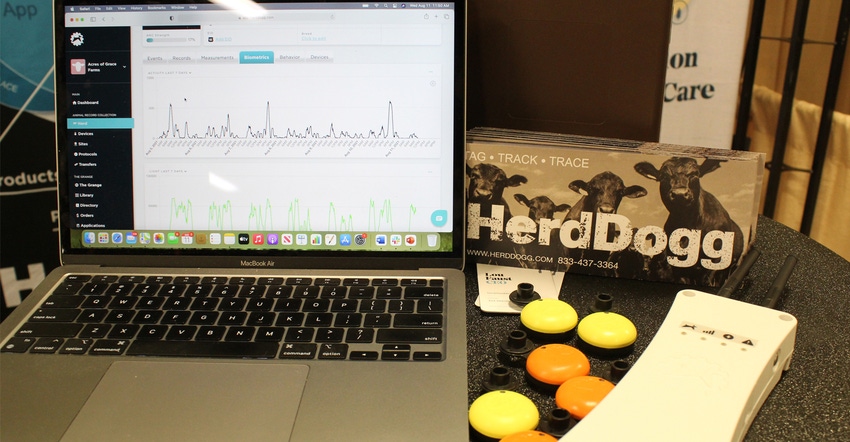HerdDogg’s new long-range smart tags allow cattle producers to monitor stock from 100 yards away.

HerdDogg brings technology to the range so cattle producers can capture more data on their stock without running them through a chute.
Melissa Brandao, HerdDogg founder and chief revenue officer, spoke at the 2021 Cattle Industry Convention and NCBA Trade Show. The idea behind HerdDogg five years ago was to bring convenience to the cattleman checking his herd in a range pasture setting. Originally, HerdDogg used Bluetooth 4 technology in its tags, which allows them to be read at a range of about 30 feet using a HerdDogg DoggBone reader, or an app on a smartphone.
“The whole system was really designed around being able to gather data from the field where the animals were on pasture, not in the barn,” she said.
Bluetooth 5
The company recently rolled out an updated version of its product, which now uses Bluetooth 5 technology, and it boosts the reading range to 100 yards.
“We’re bringing Bluetooth 5 technology to an application that is ideally fitted for it, beef cattle,” she said. “Now I can have a little bit of a distance. Especially if we’ve got more rangy cattle that are prone to flight a little bit more.”
Brandao said using a Bluetooth network for the tags to communicate with the reader or the phone app means that they don’t need a Wi-Fi infrastructure to function.
“The Bluetooth tags communicate with the DoggBone reader, which is Bluetooth,” she said. “The DoggBone reader is then taking all that data and transferring it to the cloud via cellular.”
Moo-ving data
When she designed the system, Brandao said she wanted something that could account for the remoteness of cattle in a range grazing situation, where they may be moving around all the time, coming in and out of the range of a reader. The HerdDogg system doesn’t require the cow to stand still for very long to capture the data from her ear tag.
“We needed to create a system that’s portable enough to gather the data when the animals are nearby, and then when they turn and walk away, not have the system completely break,” she said. So, when the cow with her ear tag is in range of the reader, it opportunistically captures the data the tag has stored since the last time it was read. Cattle producers can see those data on the HerdDogg platform on their smartphone, or back in the office on a computer. They can also augment those animal records with any insights and reporting from their observations of the cow in the field.
Data collection
HerdDogg offers two types of tags — TraceTag, an RFID replacement tag which can provide a logistics management system to trace animals; and the WelfareTag, which collects an animal’s biometric data.
The RFID tag is designed to follow the animal through the food supply chain, collecting traceability data that is managed through a software platform and following the animal from one buyer to another. It ultimately follows the animal to the consumer, if that’s the end marketing goal for the cattle producer.
The biometric tags can help cattlemen identify cows that have come into heat in the pasture, allowing them to pull cattle from the herd for breeding.
To learn more, visit herddogg.com.
About the Author(s)
You May Also Like





